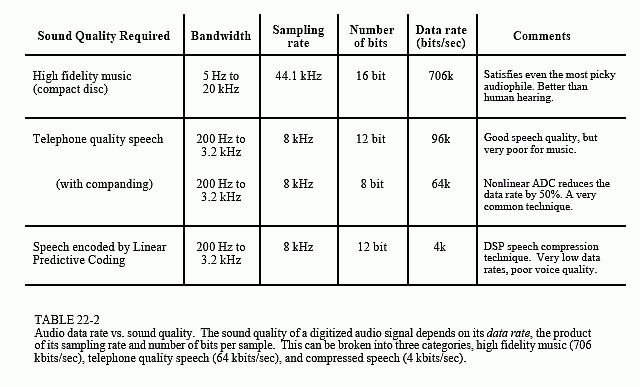The Scientist and Engineer's Guide to
Digital Signal Processing
By Steven W. Smith, Ph.D.
Book Search
Table of contents
- 1: The Breadth and Depth of DSP
- 2: Statistics, Probability and Noise
- 3: ADC and DAC
- 4: DSP Software
- 5: Linear Systems
- 6: Convolution
- 7: Properties of Convolution
- 8: The Discrete Fourier Transform
- 9: Applications of the DFT
- 10: Fourier Transform Properties
- 11: Fourier Transform Pairs
- 12: The Fast Fourier Transform
- 13: Continuous Signal Processing
- 14: Introduction to Digital Filters
- 15: Moving Average Filters
- 16: Windowed-Sinc Filters
- 17: Custom Filters
- 18: FFT Convolution
- 19: Recursive Filters
- 20: Chebyshev Filters
- 21: Filter Comparison
- 22: Audio Processing
- 23: Image Formation & Display
- 24: Linear Image Processing
- 25: Special Imaging Techniques
- 26: Neural Networks (and more!)
- 27: Data Compression
- 28: Digital Signal Processors
- 29: Getting Started with DSPs
- 30: Complex Numbers
- 31: The Complex Fourier Transform
- 32: The Laplace Transform
- 33: The z-Transform
- 34: Explaining Benford's Law
How to order your own hardcover copy
Wouldn't you rather have a bound book instead of 640 loose pages?Your laser printer will thank you!
Order from Amazon.com.
Chapter 22: Audio Processing
When designing a digital audio system there are two questions that need to be asked: (1) how good does it need to sound? and (2) what data rate can be tolerated? The answer to these questions usually results in one of three categories. First, high fidelity music, where sound quality is of the greatest importance, and almost any data rate will be acceptable. Second, telephone communication, requiring natural sounding speech and a low data rate to reduce the system cost. Third, compressed speech, where reducing the data rate is very important and some unnaturalness in the sound quality can be tolerated. This includes military communication, cellular telephones, and digitally stored speech for voice mail and multimedia.
Table 22-2 shows the tradeoff between sound quality and data rate for these three categories. High fidelity music systems sample fast enough (44.1 kHz), and with enough precision (16 bits), that they can capture virtually all of the sounds that humans are capable of hearing. This magnificent sound quality comes at the price of a high data rate, 44.1 kHz × 16 bits = 706k bits/sec. This is pure brute force.
Whereas music requires a bandwidth of 20 kHz, natural sounding speech only requires about 3.2 kHz. Even though the frequency range has been reduced to only 16% (3.2 kHz out of 20 kHz), the signal still contains 80% of the original sound information (8 out of 10 octaves). Telecommunication systems typically operate with a sampling rate of about 8 kHz, allowing natural sounding speech, but greatly reduced music quality. You are probably already familiar with this difference in sound quality: FM radio stations broadcast with a bandwidth of almost 20 kHz, while AM radio stations are limited to about 3.2 kHz. Voices sound normal on the AM stations, but the music is weak and unsatisfying.
Voice-only systems also reduce the precision from 16 bits to 12 bits per sample, with little noticeable change in the sound quality. This can be reduced to only 8 bits per sample if the quantization step size is made unequal. This is a widespread procedure called companding, and will be

discussed later in this chapter. An 8 kHz sampling rate, with an ADC precision of 8 bits per sample, results in a data rate of 64k bits/sec. This is the brute force data rate for natural sounding speech. Notice that speech requires less than 10% of the data rate of high fidelity music.
The data rate of 64k bits/sec represents the straightforward application of sampling and quantization theory to audio signals. Techniques for lowering the data rate further are based on compressing the data stream by removing the inherent redundancies in speech signals. Data compression is the topic of Chapter 27. One of the most efficient ways of compressing an audio signal is Linear Predictive Coding (LPC), of which there are several variations and subgroups. Depending on the speech quality required, LPC can reduce the data rate to as little as 2-6k bits/sec. We will revisit LPC later in this chapter with speech synthesis.
